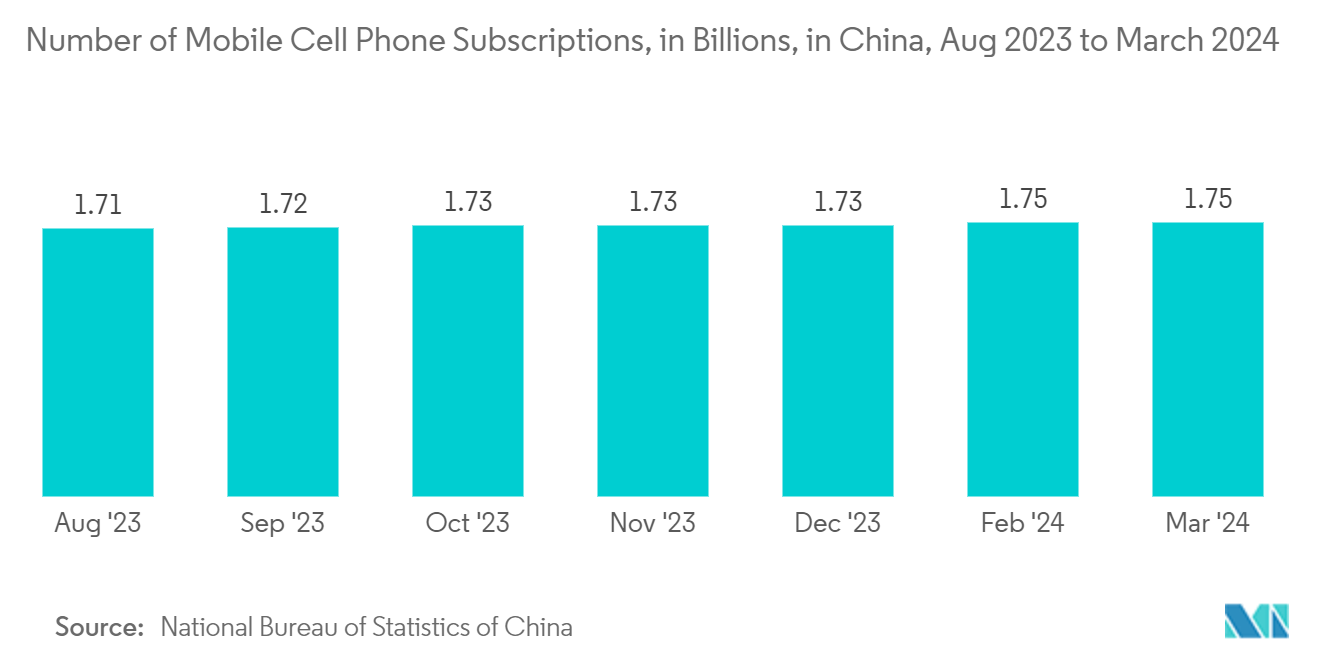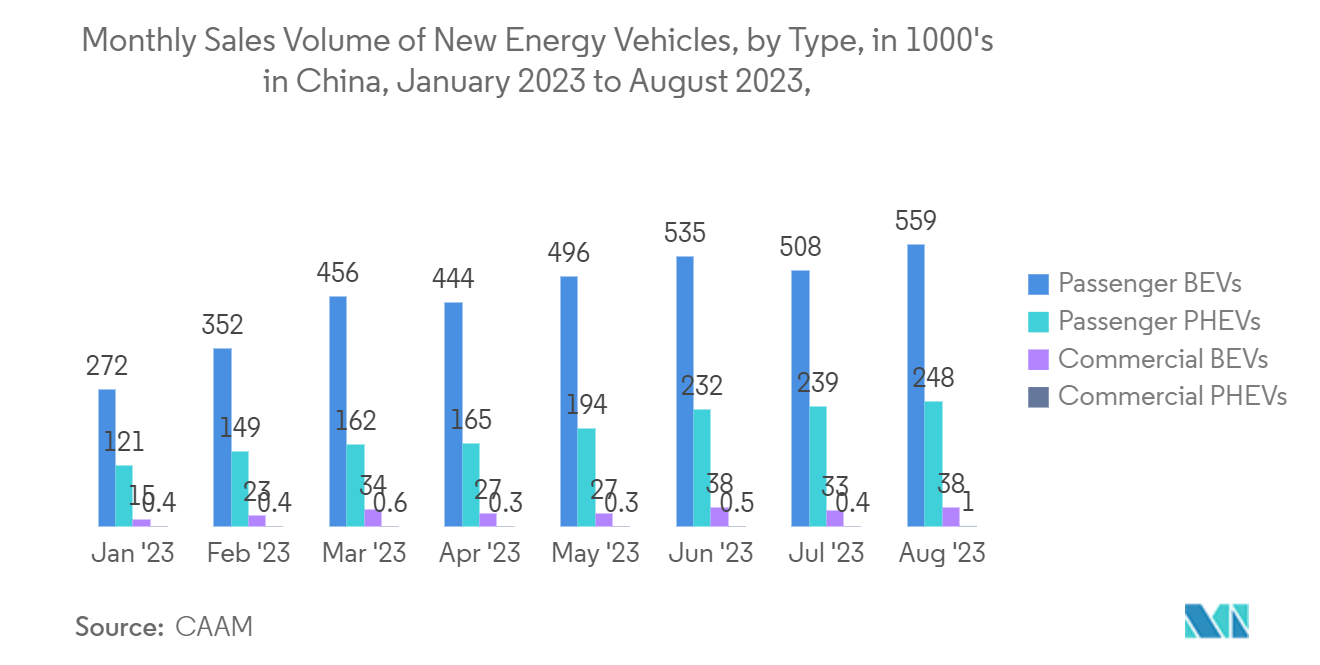Market Trends of China Optoelectronics Industry
The Image Sensors Segment is Expected to Hold a Major Market Share
- Image sensors are electronic devices that convert optical images to electric signals that a computer can process. Charge-coupled device (CCD) image sensors use optoelectronic components to convert photons of light to electrons, which are then stored and read out from the device.
- Complementary metal-oxide-semiconductor (CMOS) image sensors use optoelectronic components to detect light and convert it to an electrical signal. CMOS sensors are used in many digital cameras and smartphones.
- Further, infrared (IR) image sensors use optoelectronic components to detect IR radiation, enabling them to see in low-light or no-light situations. Optoelectronics can also be utilized to enhance the sensitivity and performance of image sensors, making it easier to capture high-quality images in challenging lighting conditions.
- According to Groupe Speciale Mobile Association (GSMA), China will witness an additional 41 million mobile subscribers by 2030, taking the mobile penetration rate to 89%. Further, according to the Ministry of Industry and Information Technology (MIIT), China had 1.84 billion cellular Internet-of-Things (IoT) connections in 2022, making it the first big economy to surpass mobile consumers in terms of cellular IoT connections. Moreover, according to the National Bureau of Statistics of China, there were more than 1.69 billion mobile phone subscriptions as of February 2023 in China. The increasing mobile subscriptions and the developing IT & communications infrastructure in the region would boost the growth of the studied market.
- There are a few different standards organizations related to image sensors in China. For example, the China National Institute of Standardization (CNIS), the national standards organization of China, is responsible for developing and implementing standards in various areas, including image sensors. They have developed several standards related to the performance and characterization of image sensors.
- Similarly, China Electronics Standardization Institute (CESI) is an organization that develops and promotes standards for the electronics industry in China. They have developed standards related to image sensors, including methods for measuring image quality. Such organizations ensure robust quality and efficient functioning of new & innovative technology and products.

The Automotive Segment is Expected to Witness a High Market Growth
- There is a growing dependence on optoelectronics in the automotive industry, including in electric vehicles. Optoelectronics refers to studying and applying electronic devices that interact with light. In the context of electric vehicles, optoelectronics can be used in various ways, such as in light-emitting-diode (LED) lighting, image sensors, laser diodes, and other components.
- Additionally, optoelectronics can be used in charging systems for electric vehicles, including onboard chargers that are mounted within the vehicles. As the market for electric vehicles continues to grow, so too does the reliance on optoelectronics in the automotive industry.
- According to the China Association of Automobile Manufacturers (CAAM), the sales of new energy vehicles in China reached 299,000 units in April 2022, of which 280,000 were passenger electric cars, and 19,000 were commercial electric cars. In 2022, 212,000 and 68,000 passenger battery electric vehicles (BEVs) and plug-in hybrid electric vehicles (PHEVs) were sold, respectively. Such a massive rise in electric vehicles would create an opportunity for the studied market to grow.
- Further, photovoltaic cells are being increasingly used in the automotive industry to power electric vehicles, including solar cars. The efficiency of PV cells is improving every year, and car manufacturers are developing solar-powered vehicles that can convert energy from sunlight into electricity and store solar energy in batteries.
- Solar modules designed and manufactured for car concepts have been presented by various automakers. Solar car roofs can generate up to 400 Watts of power and contribute to reducing the environmental impact of transportation. PV cells could also be integrated into thin-film solar cells that can be fabricated to fit any car model, making electric cars more affordable and contributing to carbon neutrality.
- The progress toward introducing solar cars would drive the growth of the studied market. For instance, in July 2022, the first entirely solar electric vehicle (SEV) was created in China due to multi-organizational collaboration. The car is presently on a tour of mainland China after being recently unveiled at the World Intelligence Conference. It weighs 2,250 pounds (1,020 kilograms). Even without the navigator's seat, it allows four people to sit comfortably.
- Moreover, LED automotive lighting has become increasingly popular in recent years due to its energy efficiency, durability, and versatility. LED bulbs provide brighter and more reliable lighting than traditional halogen bulbs and last longer. Due to its energy economy, dependability, and versatility, LED car lighting has grown in popularity in recent years. Compared to conventional halogen bulbs, LED bulbs offer brighter, more dependable lighting and lasts longer. According to the China Association of Automobile Manufacturers, in April 2022, around 210,000 commercial vehicles and 996,000 passenger cars were produced in China. The increasing automotive manufacturing in the country is anticipated to offer lucrative opportunities for the growth of the studied market.


